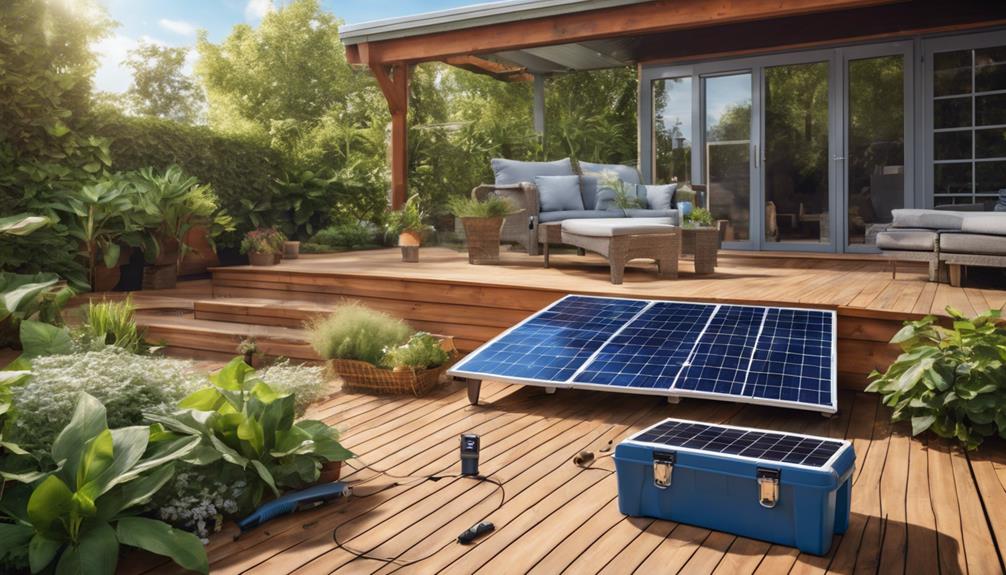
What is a Charge Controller for Solar Panels?
A charge controller for solar panels is an essential component in any solar energy system. It regulates the voltage and current coming from the solar panels to the batteries, ensuring that they are charged efficiently and safely. By preventing overcharging and deep discharging, charge controllers protect the battery’s lifespan and enhance system performance. Whether you’re a homeowner looking to power your residence with solar energy or an enthusiast setting up a DIY solar project, understanding the importance of a charge controller is crucial for maximizing your solar investment.
Types of Charge Controllers for Solar Panels
There are primarily two types of charge controllers for solar panels: PWM (Pulse Width Modulation) and MPPT (Maximum Power Point Tracking). PWM controllers are simpler and less expensive, making them a popular choice for smaller systems. They work by reducing the voltage to match the battery’s requirements, allowing for a steady charge. On the other hand, MPPT controllers are more advanced and efficient, especially in larger installations. They optimize the amount of energy harvested from the solar panels by adjusting the voltage and current, thus maximizing energy transfer to the batteries. Understanding the differences between these types can help you choose the right charge controller for your specific solar power needs.
Why Do You Need a Charge Controller for Solar Panels?
Using a charge controller for solar panels is vital for several reasons. Firstly, it prevents battery overcharging, which can lead to battery damage or failure. Secondly, it ensures that the batteries do not discharge too deeply, which can also shorten their lifespan. Additionally, a charge controller can provide vital information such as battery voltage, charging status, and energy production, allowing you to monitor your solar system’s performance effectively. Without a charge controller, your solar power system would be at risk of inefficiency and potential damage, making it a non-negotiable component of any solar setup.
How to Choose the Right Charge Controller for Your Solar Panel System
When selecting a charge controller for your solar panel system, several factors should be considered. Firstly, determine the size of your solar panel array and the capacity of your battery bank, as this will influence the type and rating of the charge controller you need. For example, if you have a larger system, an MPPT controller might be more suitable due to its higher efficiency. Additionally, consider features such as built-in protections against overcharging, short circuits, and reverse polarity. Compatibility with your existing solar equipment is also crucial, so ensure that the charge controller you choose can seamlessly integrate with your solar panels and batteries.
Installation Tips for Charge Controllers in Solar Systems
Installing a charge controller for solar panels is a straightforward process, but it requires attention to detail to ensure optimal performance. Start by reading the manufacturer’s instructions carefully. Generally, the installation involves connecting the solar panel to the charge controller and then connecting the charge controller to the battery bank. It’s essential to use the correct wire sizes to handle the current and avoid voltage drops. Additionally, the charge controller should be mounted in a cool, dry place away from direct sunlight to prevent overheating. Following these tips will help ensure that your charge controller operates efficiently and prolongs the life of your solar energy system.
Common Problems and Troubleshooting Charge Controllers
Like any electronic device, charge controllers for solar panels can encounter issues. Common problems include incorrect voltage readings, failure to charge the batteries, or overheating. If you notice that your batteries are not charging, first check the connections to ensure they are secure and free of corrosion. If the charge controller is overheating, it may be mounted in an unsuitable location or may require a larger unit for your system’s size. Additionally, ensure that the solar panels are clean and unobstructed to maximize energy production. Regular maintenance and monitoring can help you catch and resolve these issues early, keeping your solar system running smoothly.
Maintaining Your Charge Controller for Longevity
To ensure the longevity of your charge controller for solar panels, regular maintenance is key. Start by conducting periodic inspections to check for loose or corroded connections, which can lead to performance issues. Keep the charge controller clean and free of dust, dirt, and debris to prevent overheating. It’s also advisable to periodically check the firmware if your charge controller has updatable software, as manufacturers may release updates that improve functionality and efficiency. By following these maintenance tips, you can enhance the reliability and lifespan of your charge controller, ensuring that your solar power system remains efficient for years to come.
Conclusion: The Importance of Charge Controllers in Solar Energy Systems
In conclusion, charge controllers for solar panels play a critical role in the efficiency and longevity of solar energy systems. By regulating the charging process, preventing battery damage, and providing valuable system data, these devices are indispensable for anyone utilizing solar power. Whether you are considering installing solar panels for your home or are already operating a solar energy system, investing in a high-quality charge controller tailored to your needs is essential. By understanding the types, choosing the right model, and maintaining your charge controller, you can maximize your solar energy investment and enjoy the benefits of renewable energy for years to come.





